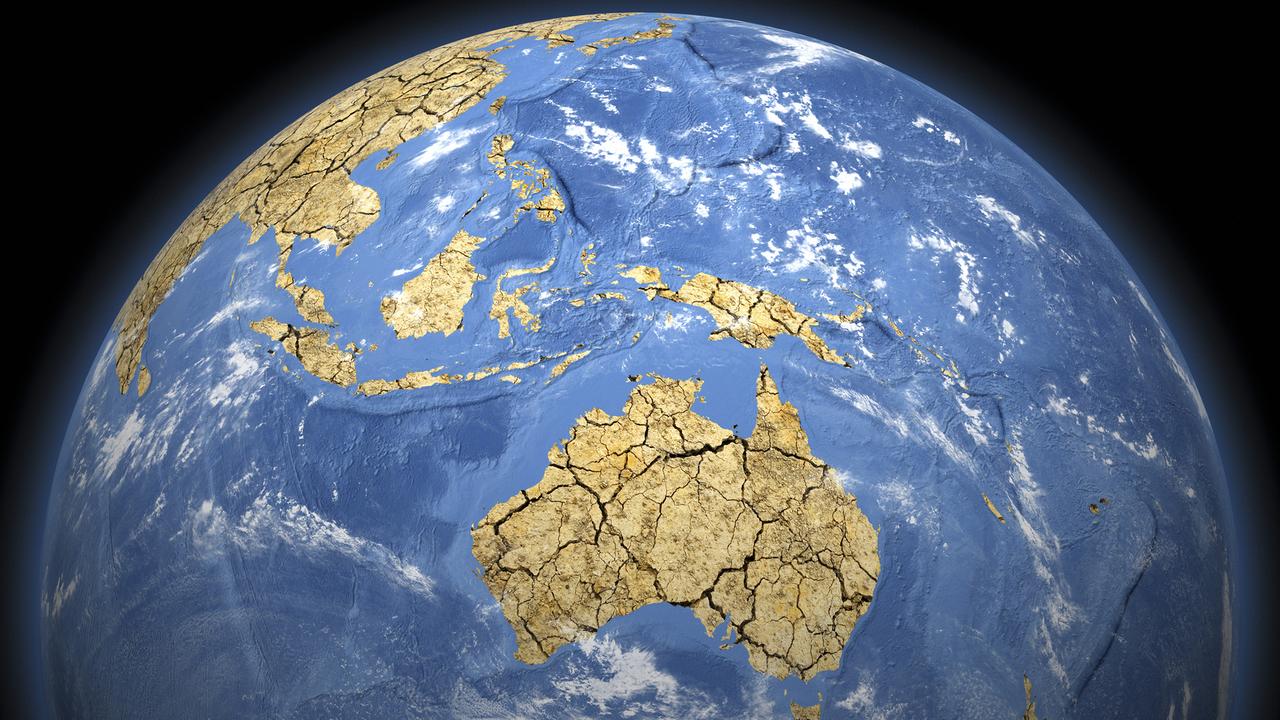Climate change Part 2: How climate change affects Australia
PART 2: Just like other places in the world, Australia is counting the cost of climate change. Bushfires, droughts, floods and coral bleaching on the Barrier Reef are all part of the toll

READING LEVEL: GREEN
Have you noticed the climate is changing? As you go about your life, it might be hard to see or understand the impact, but scientific research shows it’s happening.
Like other places in the world, Australia is experiencing climate change, mostly due to emissions* of harmful greenhouse gases* into the atmosphere* from power plants, cars and other sources. This causes temperatures to rise, which affects the climate.
Scientists predict that without action on climate change, Australia will experience many more devastating events in coming years, such as droughts, floods, heatwaves, coastal inundation*, and bushfires like the Black Summer fires of 2019/2020.
Such events have a big impact on the health and wellbeing of people and can be devastating for wildlife and plant life.

They could also affect our food supply. For example, we could have less water to irrigate* food crops; farms could become unprofitable and go out of business; cyclones, heatwaves and floods could destroy crops; droughts could kill sheep, cows and other livestock; and harsh temperatures could reduce the quality of our food. This means our food could become more expensive to buy.
Scientists have observed climate change for many years and have been very worried about it, but now more people, including everyday Australians and politicians, are expressing their alarm and want to do something about it.
HOW HAS CLIMATE CHANGE AFFECTED US SO FAR?
Every two years, the Australian government releases an important report called State of the Climate that looks at how climate change is affecting Australia.
The report is written by the CSIRO and the Bureau of Meteorology.

Here are some important findings from the most recent report, released in 2020:
- Australia has become about 1.4C warmer since 1910 – this doesn’t sound much, but it has led to more extreme heat events.
- All months of the year are now warmer (even though it might not feel like it in winter).
- Both daytime and night-time temperatures have gone up.
- Our warmest year on record was 2019.
- The seven years from 2013 to 2019 were some of our warmest-ever years.
- Oceans around Australia are becoming more acidic*. This is because oceans absorb about 30 per cent of the carbon dioxide released into the atmosphere and when humans produced more carbon dioxide, the oceans also absorb more of this gas.
- Oceans have warmed by more than 1C since 1900. This has contributed to longer and more marine heatwaves (when the sea temperature spikes, affecting underwater plants, coral and animals).
- Globally, sea level has risen by about 25cm since 1880, and half of this rise has happened since 1970. Sea levels are rising around Australia, increasing the risk of inundation and damage to buildings, roads and other coastal infrastructure*.
- In Australia’s alpine areas, there are declining snowfall days, snow area, maximum snow depth and snow-cover days.
- April to October rainfall has declined about 16 per cent in the southwest of Australia since 1970. The largest decrease – 20 per cent – has been in the months of May to July.
- In Australia’s southeast, April to October rainfall has declined about 12 per cent since the late 1990s.
WHAT’S HAPPENED TO THE CORAL?
The Great Barrier Reef, in Queensland, is one of the world’s most spectacular natural attractions. But some of its famous, vivid* coral has been bleached* over the years because of warming sea temperatures.
The reef has been especially damaged by the water temperature rising more than normal during three recent marine heatwaves.
The outlook for the reef is uncertain. For the coral to recover, sea temperatures would need to reduce and conditions return to normal.

HOW WILL CLIMATE CHANGE AFFECT US IN THE FUTURE?
The latest State of the Climate report predicts that in coming decades, Australia will have more extremely hot days and fewer extremely cool days.
It also predicts:
- More days of dangerous fire weather
- Longer droughts
- Heavier rainfall events throughout the country
- Sea level rises in some areas
- Fewer, but more intense, tropical cyclones
- More coral bleaching because of marine heatwaves
- Warmer and more acidic oceans
- More snowmelt and less snowfall

GLOSSARY
- emissions: harmful gases that are produced and released into the environment
- greenhouse gases: gases in the Earth’s atmosphere that trap heat. They include carbon dioxide and methane
- atmosphere: gases that surround planets, including Earth
- inundation: to cover with water, especially floodwaters
- irrigate: supply water to plants to help them grow
- acidic: containing acid, in this case carbon dioxide
- infrastructure: the basic facilities a society needs, such as buildings, roads and power supplies
- vivid: deeply or brightly coloured
- bleached: made white or much lighter by a chemical process
EXTRA READING
Meet the greenhouse gas makers
Australia’s climate plans and promises
How to tackle the climate challenge
How to cope with climate worries
QUICK QUIZ
- Name three impacts scientists predict Australia will see without action on climate change.
- What is the name of the climate change report released by the Australian government every two years?
- Which organisations write this report?
- How much warmer has Australia become since 1910?
- What has caused bleaching of some of the coral in the Great Barrier Reef?
LISTEN TO THIS STORY
CLASSROOM ACTIVITIES
Refer to the accompanying Climate Change Education Kit classroom workbook with 20 activities. It’s FREE when teachers subscribe to the Kids News newsletter.

